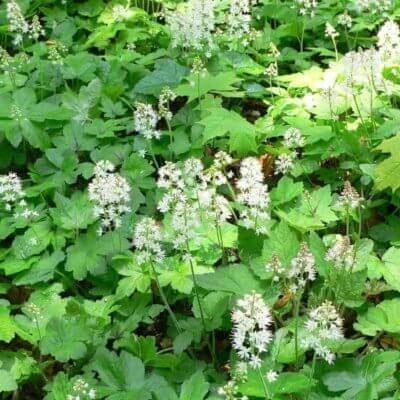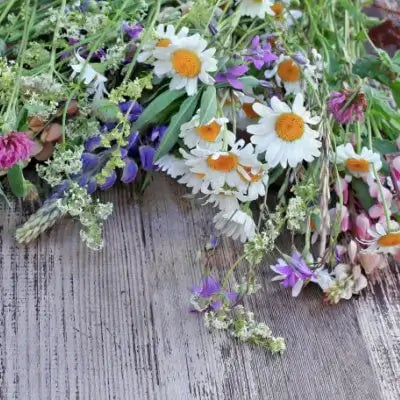In landscaping, perennials stand as timeless champions
Perennials offer many benefits that contribute to outdoor spaces' aesthetics, functionality, and sustainability. These enduring plants, known for their ability to return year after year, bring forth an array of advantages that make them a staple in garden designs and landscaping projects.
From their diverse colors and textures to their role in ecological balance, perennials enrich the landscape in multifaceted ways.
1. Long-lasting Beauty: One of the most apparent benefits of using perennials in landscaping is the beauty they bring to outdoor spaces. Perennials offer endless options for creating stunning visual displays. From delicate blooms to robust foliage, they contribute to the ever-changing tapestry of a landscape, evolving throughout the seasons and providing constant interest.
2. Economic Value: While the initial investment in perennials may be slightly higher than annuals, their long-term value far outweighs the cost. Once established, perennials require less frequent replanting, saving time and money. Their longevity also means that over the years, they continue to expand and fill in spaces, reducing the need to purchase additional plants for the same area.
3. Low Maintenance: Perennials are renowned for their low maintenance requirements. Once they are well-established, they generally demand less attention than annuals. They have developed intricate root systems that help them survive various weather conditions and adapt to their environment. This resilience makes them an ideal choice for busy homeowners or commercial landscapes that require plants with minimal upkeep.
4. Ecological Benefits: Perennials play a vital role in promoting ecological balance. The root systems also create habitats for beneficial organisms, including soil microbes and insects.
5. Water Efficiency: In a time when water conservation is of paramount importance, perennials offer a solution. Once established, they generally require less water than their annual counterparts. Their well-developed root systems enable them to access water more profoundly in the soil, reducing irrigation frequency. Choosing drought-tolerant perennials further enhances water efficiency in landscaping projects.
6. Seasonal Interest: Perennials create an ever-evolving landscape throughout the year. Different species bloom at other times, ensuring something is always captivating. From the first crocuses of spring to the vibrant mums of fall, perennials provide a dynamic and visually appealing backdrop that changes with the seasons.
7. Design Versatility: The versatility of perennials allows landscape homeowners to create a wide range of styles, from formal gardens to naturalistic meadows. They can establish focal points, frame pathways, soften hardscape elements, or create lush borders. Combining different heights, textures, and colors enables endless creative possibilities.
8. Environmental Impact: Perennials contribute to reducing the carbon footprint associated with landscaping. Since they don't need to be replanted yearly, there is less demand for transportation, production, and disposal of plant material. It makes them a sustainable choice for eco-conscious projects.
9. Property Value: A well-designed landscape with healthy and diverse perennials can significantly enhance curb appeal and property value.
10. Educational Opportunities: Perennials offer an educational platform for learning about plants and ecosystems. They allow individuals, especially children, to observe plant life cycles, understand the role of pollinators, and engage in hands-on activities like dividing and transplanting. This experiential learning can foster a deeper appreciation for nature and sustainable practices.
Perennials are essential in landscaping, bringing many benefits to span aesthetics, economics, ecology, and more
Their enduring beauty, low maintenance requirements, ecological contributions, and design versatility make them valuable assets in residential and commercial outdoor spaces.
As landscapes evolve and adapt to changing conditions, perennials remain steadfast, enhancing the environment and enriching the lives of those who interact with them. Whether planted as a single specimen or integrated into intricate garden designs, perennials continue to captivate the imagination and offer enduring rewards.
Perennials, an innovative educational platform, stands at the forefront of this endeavor, offering a captivating gateway to the world of plants and ecosystems. With a mission to nurture curiosity and instill a deep appreciation for the natural world, Perennials provides an immersive learning experience that transcends traditional boundaries.
At its core, Perennials is driven by the recognition that plants play a fundamental role in shaping our planet. These perennial plants embody resilience and adaptation as metaphors for life's challenges. Through a carefully curated range of interactive lessons and engaging content, Perennials enables learners of all ages to discover the captivating stories that plants and ecosystems have to tell.
The platform's strength lies in its multidisciplinary approach, intertwining botany, ecology, conservation, and history. By breaking down complex concepts into accessible knowledge nuggets, Perennials empowers learners to grasp the interconnectedness of all life forms. From the intricate mechanisms of photosynthesis to the delicate balance of symbiotic relationships, learners embark on a journey that unveils the complex tapestry of our natural world.
A hallmark of Perennials is its experiential learning model. Learners are transported to different corners of the globe through virtual field trips to diverse ecosystems, from lush rainforests to arid deserts. By immersing learners in interactive simulations, Perennials bridges the gap between theory and reality, allowing for a deeper connection to the subject matter.
One of the unique features of Perennials is its emphasis on citizen science
Learners can actively contribute to real-world research projects through partnerships with botanists and ecologists. By engaging in hands-on activities like data collection and plant identification, learners become advocates for sustainability and conservation.
Perennials' impact extends beyond the digital realm through community engagement initiatives. This collaborative spirit encourages ongoing learning and exploration, transforming education into a lifelong journey.
In conclusion, Perennials emerge as a transformative force in plant-centric education. The platform redefines how we learn about plants and ecosystems by offering a holistic approach that combines scientific knowledge, interactive experiences, and a sense of community. In a world facing ecological challenges, nurturing a generation of informed and passionate individuals through Perennials could be the catalyst for a more sustainable and harmonious future.
Read more

Choosing the right location for your perennials is essential for their growth and health. Most perennials thrive in areas with at least 6 hours of sunlight daily. However, some perennials, such as ...

During wintertime, most garden plants enter a period of dormancy due to the cold, harsh weather. Preparing outdoor plants for the winter season will ensure that they will survive and wake up undama...
Family Owned and run with pride
Nestled in the heart of Middle Tennessee, TN Nursery is a proud family-owned business rooted in tradition, quality, and a deep love for plants. For generations, we’ve been dedicated to providing exceptional service and building lasting personal connections with gardeners, landscapers, and nature enthusiasts across the country. Our mission is to make planting and gardening more accessible, enjoyable, and rewarding—whether you’re a seasoned horticulturist or just starting your first flower bed.
We specialize in expertly grown native plants, perennials, shrubs, trees, and ferns that thrive in a variety of climates. Every plant we offer is carefully nurtured on our farm to ensure strong root systems, healthy growth, and long-term success in your landscape. From vibrant evergreens to colorful blooms and ground covers, we offer an expansive selection to help you create the outdoor space of your dreams.
At TN Nursery, we believe in more than just selling plants—we’re here to help you transform your garden into a place of beauty, sustainability, and joy. Our knowledgeable team is always available to answer questions, offer guidance, and share tips to ensure your planting experience is a success. Join our growing family of happy customers and let us help you bring your garden vision to life.



